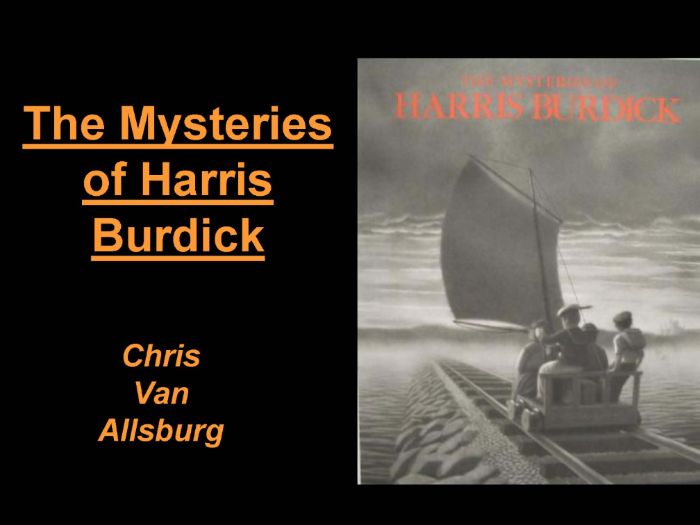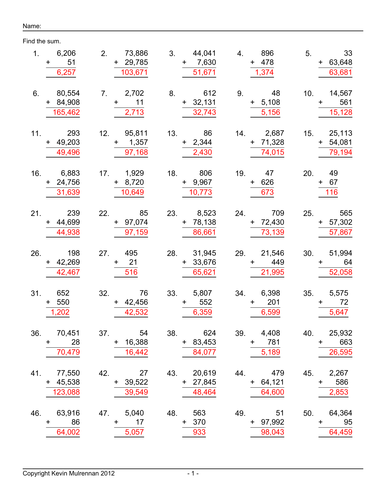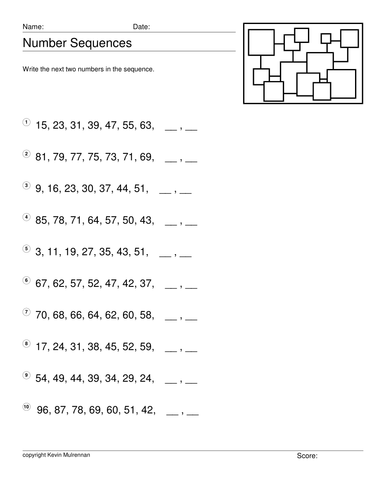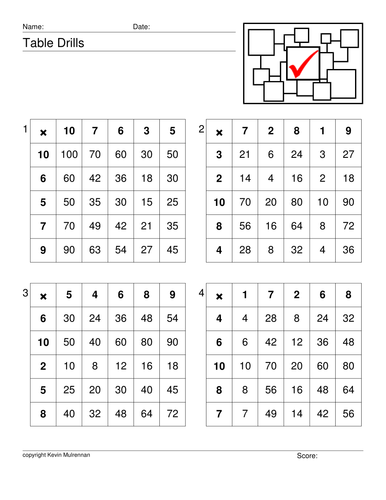357Uploads
98k+Views
28k+Downloads
Sale

English year 5 and 6 The Mysteries of Harris Burdick Planning and Powerpoints Literacy year 5
A great collection for teaching this interesting topic.
You get powerpoints and planning.
Sample :
Punctuate sentences accurately, including using speech marks and apostrophes.
Use commas to mark clauses.
Group and classify words according to their type and meaning.
Read a variety of texts, commenting on the author’s choice of vocabulary.
Construct sentences which are punctuated correctly; including the use of commas, speech marks and apostrophes.
Use a range of connectives to join sentences.
Experiment with complex sentences.
Whole Class Shared Learning
Discuss pronouns (homework)
Define each type of word: Noun, adjective, verb and adverb. Build up a sentence as we go.
Show the children a picture on the whiteboard of a horse galloping and of a lightning bolt. Children to write down 3 (LA) or 5(MA and HA) important nouns from the picture. Share. On the left of the noun, children to write an adjective to modify or describe the noun. Share. After the noun, children to write a verb and then an adverb to qualify the verb.
e.g. The black horse galloped elegantly along the beach.
Praise the children on yesterday’s literacy work – they showed knowledge of the function of nouns, adjectives, verbs and adverbs (HA showed knowledge of the difference between common, proper and pro nouns).
Children to name a range of punctuation – I record on the board (I do not add to it at this point).
Ask volunteers to illustrate uses of the punctuation named. Look on the punctuation pyramid – have we named any L5 punctuation? This is what we should be aiming at all the time.
Children to have a variety of sentences to up level punctuation on their whiteboards.
Come back to ‘The Mysteries of Harris Burdick’. Read through all of the captions and talk about ‘reading’ the illustration. Allow children time to talk about the ‘mystery’ – what do they think happened to Harris Burdick?
Choose a picture from ‘The Mysteries…’ and list all of the questions which it provokes. What do children think of the pictures? Do the captions answer any of the questions?
Talk about the settings in the pictures – often they are recognisable, familiar settings where things are not as they seem. Explain that we would call this ‘Stories in a familiar setting’.
Model the task.
Use PPT to study speech punctuation.
Use the pictures from ‘The Mysteries…’ to write some possible dialogue.
Model possible conversations, including synonyms for said and adverbs plus adverbial clauses. With correct punctuation.
Look at some of the pictures from ‘The Mysteries …’
Think / discuss some of the characters in the pictures. Use adjectives to describe them – give them names. From the pictures come up with verbs to describe what they are doing then add adverbs and adverbial clauses.
Sale

Back to School The Piano by Aidan Gibbons Year 6 Literacy Planning
Great planning and powerpoints on this fascinating topic.
sample :
Speaking
• Tell a story using notes designed to cue techniques such as repetition, recap and humour
Drama
• Reflect on how working in role helps to explore complex issues
Understanding and interpreting texts
• Infer writers’ perspectives from what is written and from what is implied
• Compare different types of narrative and information texts and identify how they are structured
Creating and shaping texts
• Reflect independently and critically on their own writing and edit and improve it
• Experiment with different narrative forms and styles to write their own stories
Sentence structure and punctuation
• Adapt sentence construction to different text-types, purposes and readers
• Punctuate sentences accurately, including using speech marks and apostrophes
Understand, analyse and compare several ‘visual texts’.
Comment on the technical parts of a visual text.
Write a review using correct format and language.
Whole Class Shared Learning
Guided and Independent Activities:
Start to understand what is meant by a ‘visual text’. What do we know so far about narrative writing? Create a list of facts to add to working wall including: fictional, dialogue, opening etc.
Explain to the children briefly, that they are going to watch a short, animated film, entitled ‘The Piano.’ Explain also that there is no dialogue or narration; it will be up to the children to decide what the film is about, to answer simple questions, raise some of their own and provide their own explanations for what they see.
Tell the children that they’re going to watch the film, quietly and without comment at first. Then, watch ‘The Piano’ by Aidan Gibbons.
Model completing thinking feeling and speech shapes linked to the narrative.
Sale

Shakespeare Week Lesson Plan For Year 6
Suitable for year 6.
Worked very well for me.
For instance the first day :
Grammar Starter
http://www.oxforddictionaries.com/words/apostrophe
L.O: Know one of Shakespeare’s stories.
Success Criteria
Know some background information about William Shakespeare, his time and his work.
Describe the basic plotline of ‘A Midsummer Night’s Dream’
Start to talk about the main characters; their hopes, desires and challenges.
Main teaching:
Who was William Shakespeare?
http://www.bbc.co.uk/schools/primaryhistory/famouspeople/william_shakespeare/
Use above website to read about his background – note that he wrote plays – his works were intended to be acted.
http://www.opensourceshakespeare.org/views/plays/plays.php
Use the above website to look at the list of plays – discuss terms tragedy, comedy and historical play.
Read ‘A Midsummer Night’s Dream’ shortened, story version. Explain that this was written in 1595.
Sale

Year 6 Literacy Revision Autobiography Explanation Texts The Shirt Machine
Nice Summer planning for year 6.
Focuses on the Shirt Machine.
Plenty of planning and powerpoints etc.
Sale

Autumn Planning Year 5 Literacy ks2 & Aesop Fables Worksheets
Reclaim your Sundays!
Literacy planning for year 5 for the Autumn term.
Plus 108 great close worksheets on Aesop’s fables.
Planning covers topics such as Famous Authors’ Plans, Myths, Legends and Fables, Recounts.
You get over 40 mb of material.
Sale

Morning Work Sentence Uplevelling Work Literacy Year 5 Pie Corbett
Some easy worksheets to get pupils uplevelling.
Good exercise to have on the desk when they arrive in class.
Plus some nice VCOP and Pie Corbett stuff.
Improving Sentences Checklist:
improve the verb
add an adjective (WOW word)
extend with a connective
start with an ly, ed or ing word
include a simile or a metaphor
add an adverbial
Sentence up Levelling
There was a volcano There were sparks flying
Molten lava streamed down the sides
Bundle Sale

Algebra and Pythagoras worksheets KS2 Fractions
A bundle.
1000 questions Equations Single Variable Mathematics KS2 Algebra
100 Questions on Pythagoras Answers Provided
Half a million (500000) Fractions Questions Worksheets KS2 Mathematics Maths
Sale

Year 4 Area and Perimeter Maths Lesson Plan Squares and Rectangles
Nice lesson.
Possible cross curricular links. Outside area planning.
Learning Objectives. Ma 1 Organising and explaining
Ma 3 Calculate perimeter/area of squares and rectangles.
• To explain methods and reasoning
• To solve mathematical problems, recognise and explain patterns and relationships.
• Calculate perimeters and areas of rectangles.
• Find the largest area that can be made with a rectangle that has a perimeter of 26 metres.
Success criteria.
• To be able to work out the area of a rectangle or square.
• To make different rectangles that all have the same perimeter.
• To recognise the largest area.
• To compare the relationship between the length of the sides and the area of the rectangle.
• To explain reasoning.
Mental/Oral. 10 mins. LSA to support LA children.
The answer is 16. What is the question?
Using the yes/no cards hold up the correct side in response to the question.
15 + 1, 10 + 4, 18 – 2, double 2 ……. (12 questions.)
Can we think of any more to add to the list?
Discuss any misconceptions as they arise, also the quick ways to add numbers mentally. Emphasis on bonds and doubles or near doubles.
With a partner, using InWB find as many questions as possible for the statement.
The answer is 24. What could the question be?
Vocabulary.
add
subtract
multiply
divide
double
near double
half
equals
Resources :-
Yes/No cards.
InWBs and pens.
Nice worksheets and powerpoint to do an investigation on the area and perimeter of squares and rectangles.
Possible cross curricular links. Outside area planning.
Learning Objectives. Ma 1 Organising and explaining
Ma 3 Calculate perimeter/area of squares and rectangles.
• To explain methods and reasoning
• To solve mathematical problems, recognise and explain patterns and relationships.
• Calculate perimeters and areas of rectangles.
• Find the largest area that can be made with a rectangle that has a perimeter of 26 metres.
Success criteria.
• To be able to work out the area of a rectangle or square.
• To make different rectangles that all have the same perimeter.
• To recognise the largest area.
• To compare the relationship between the length of the sides and the area of the rectangle.
• To explain reasoning.
Mental/Oral. 10 mins. LSA to support LA children.
The answer is 16. What is the question?
Using the yes/no cards hold up the correct side in response to the question.
15 + 1, 10 + 4, 18 – 2, double 2 ……. (12 questions.)
Can we think of any more to add to the list?
Discuss any misconceptions as they arise, also the quick ways to add numbers mentally. Emphasis on bonds and doubles or near doubles.
With a partner, using InWB find as many questions as possible for the statement.
The answer is 24. What could the question be?
Vocabulary.
add
subtract
multiply
divide
double
near double
half
equals
Resources :-
Yes/No cards.
InWBs and pens.
Sale

Teaching Resources 100 worksheets Time Passages KS2 Maths Mathematics
I have designed 100 worksheets on time passages for primary school children. They have to draw the time hands on the clocks on the sheets. What time will it be? - There are two clocks . The first clock shows a time, the second clock is blank. A question like "What time will it be in 2 hr and 20 min?" appears below the clocks. The student draws the answer on the second clock. You can use your professional judgement to choose the appropriate sheet. Answer sheets are provided for all worksheets.
Sale

Year 1 Maths English Planning
Planning for English and Maths. 56 files.
sample:
Text:
This is the bear and the scary night
Genres covered in this unit:
Narrative SPAG focus:
Monday: spelling patterns
Tuesday: use and to join clauses
Wednesday: high frequency words
Thursday: high frequency words
Friday: time connectives
Key teaching input/texts/questions/
clips etc Steps to Success
Read the story This is the Bear and the scary night
Discuss character, setting, key events etc…
Discuss what happened in the beginning, middle and end of the story. Explain to the children that this week they are going to write their own story similar to the bear and the scary night.
Ask children to describe their character to their partner (can be their favourite toy or the teddy they bought into school on Friday).
Ask children to share their ideas about their story.
What is the setting?
What are the characters doing?
What is the problem?
How are the characters feeling?
How does your story end?
Mild: describe your main character
Spicy: share your ideas with your partner
Hot: listen attentively to your partner
Extra Hot: Act out key events from your story
LA Activities MA Activities HA Activities
Read to Write
Mrs Preston Phonics
Mrs Simpson Talk for writing and act out their story
Photos for books
Resources: The bear and the scary night book, cards with questions
Give 3 minutes for children to recap their story.
Who is their main character?
What happens at the beginning, middle and end of the story?
Model how to put key ideas onto their plan.
Steps to Success
Mild: recap your story with your partner
Spicy: Identify the beginning, middle and end of your story
Hot: Write key ideas onto your story plan for the beginning, middle and end.
Extra Hot: Check your partner’s plan is sequenced correctly
Sale

100 Questions on Pythagoras Answers Provided Mathematics Geometry KS2
**100 questions on Pythagorus.
IF YOU LIKE THUS I HAVE A REALLY BIG FILE IN THE SHOP
15000 Pythagoras Questions Pythagorean Theorem Maths KS2 KS3
Answer sheets provided.
A good little exercise for your students. Using a calculator this should keep them busy and help you teach Pythagoras’ theorem.**
Sale

1000 Questions Advanced Addition Maths Mathematics KS2
1000 questions on advanced addition.
Pupils write the answers directly on the sheets. There are different numbers of digits that they can add up.
Answers all provided.
Sale

Year 5 Literacy Planning Autumn Term KS2 Greek Myths Big Write
This is a zip file containing Literacy planning for a year 5 class (Autumn term)
It consists of 14 short term plans I designed. There is one Literacy lesson per day.
You will get 14 Microsoft Word documents. They are based on the Greek myths.
I’ve also included for free some extra teaching materials that you can use. I’ve included too 3 medium term plans , one for each term). These cover plans and ideas not just for Literacy, but other subjects as well.
I’ve also included an extra week from the next term. Feel free to use it to plug any gaps.
This will help you do your own planning. Feel free to cut and paste into your own school’s plans.
Ideal for someone who had to do a term’s supply like I had to do.
Please bear in mind:
every school is different. My plans assume you have the aide of a TA, but this is not essential. There is no differentiation in the planning. Everyone does the same thing to the best of their ability.
you may want to add your own detail. These are short term plans remember.
I have used walts and wilts. Your school may do something different.
A very few number of weeks have a small gaps for things like tests and inset days. Use the extra week one planning for the next term (included for free) if you wish.
Sale

Number Sequences Maths 100 Worksheets with Answers
100 worksheets.
100 answer sheets.
At least 10 questions per sheet.
Pupils have to enter the next two numbers in the sequence.
They get harder so that later sheets include decimals and 20 questions per sheet.
Sale

Years 1 to 4 Complete Year's Religious Studies R.E. Planning
For all years 1 to 4 complete planning all terms.
Easily adaptable up or down, so will save you hours.
Catholic in flavour but other religions included.
Contains powerpoints, planning, worksheets, info etc.
Why not look at the bundles. Incredible value and it’ll save your precious Sundays.
Ideal if you have been chosen to deliver R.E.
N.B. You will need to spend some time organising as I am retired. Also not a great deal of year 2 stuff. If you want superorganised stuff, please look at my RE powerpoint stuff,
sample planning :
Learning and growing as the People of God:
Short-term Planning Unit I – Easter
Most children will know that the four Gospels contain accounts of the Resurrection of Christ. They will be able to understand the transforming effect this had upon the disciples. The children will know that the Ascension reminds Christians of the promise of Christ to remain always with them.
Less able children will be able to recall parts of the Resurrection story from some of the Gospels.
More able children will have a greater understanding of the importance of the Resurrection for Christians today and of their belief in the presence of Christ in the Church and in their lives.
Start date: Finish Date
Additional details including groupings, differentiation Vocabulary and
Key Questions Resources Prayer
Revise with children previous learning about the Church’s celebration of Easter.
Recall that it is a season of fifty days and revise some of the colours and symbols of the season that are used in the Church’s liturgy.
Activity:
In groups - give children the colours and the symbols to match.
White Easter light
innocence
purity
joy
triumph
glory
Red Feasts of the Lord’s Passion, Blood and Cross the Passion
blood
fire
God’s Love
martyrdom
Palm Sunday
Purple Good Friday penance
humility
melancholy
Gold Easter joy
Children to read one of the four Gospel accounts of the Resurrection:
Matthew 28: 1-15, Mark 16: 1-17, Luke 24: 1-43, John 20: 1-21
Group Activity:
Must - Highlight the words and actions of the disciples and the women and the words and actions of Jesus.
Should/Could -Create a resurrection appearance table. Include in the headings: What the disciples were doing, what they saw, and what Jesus said and did.
(Use the above Gospel accounts to fill in the table).
Plenary:
Children to imagine that they are about to meet somebody who had never heard of Jesus before. What would they tell this person about the resurrection? What would be the most important information that they would need to pass on?
What were the words and actions of ____ at the resurrection of Christ?
Markers Remind the children that prayer time is an
important opportunity for us to recognise
the presence of Jesus in our lives.
Provide moments for silent prayer. Use
music and appropriate Easter focus,
Use the Resurrection and Ascension
stories during Collective Worship.
Other links/Homework
Sale

Back To School Kensuke's Kingdom Year 4 to 6 Planning and worksheets
I’m now retired from teaching after decades in the classroom.
I’d like to help the younger generation.
One aspect I don’t miss in Sundays. Trying to fill in planning grids that were rarely used or looked at. What a nightmare!
So I’ve put together my teaching plans etc from the various schools I was in.
The zip contains loads. I’ve put a sample in the ordinary download to give you a flavour
It’s mainly to do with Kensuke’s Kingdom. But there’s othet stuff too included for free. There’s stuff on Dolphin Boy, Butterfly boy etc.
Feel free to adapt for your planning grid.
Sample planning :
Recount one event from holiday. Note features and language patterns to list.
Chronological, time connectives, 1st person, past tense, personal views. Write a recount for the Easter holiday. Individual revision task. Focus on organization and links using temporal connective phrases. Personal views.
Introduce ch 1 for Kensuke’s Kingdom. Record initial response with prediction. Select examples to show Michael’s feelings. List reasons for and against yourself and family setting off on a round the world sail, Justify relating to evidence selected from the text.
Red: format provided
Gr/Or: list reasons from two places
Bl/Y: form contrasting sentences… begin with, “even though…”
Read ch 2. In pairs. How does Mom feel about the trip and Dad’s ideas? What is the alternative? 1. Why has Michael decided now to tell his story?
2. Who are the members of Michael’s family?
3. What do the family do together on the weekends? Can you describe how it makes them feel?
4. Why do the family stop sailing?
5. What is the atmosphere like in the house?
6. What happened to Michael’s best friend?
7. What happens to Michael’s father and why?
8. What do you think happens next?
9. Describe the father when they meet up again. What sort of mood is he in?
Read chapter three. List examples of each character’s feelings. How do Mom and Dad’s feelings compare.
When Michael and his family first set sail, how many miles a day do they want to do?
How many miles a day do they actually do?
What game do Michael’s parents play?
What do they eat?
What creatures do they see off the coast of Africa?
In November they went to Brazil. Where did they stop?
What did Michael do in Brazil?
What did they do on Christmas Day?
Describe, in your own words, the incident with Stella Artois. Record the incident with Stella as a personal diary entry.
Refer to events in the chapter.
HA: personal style to include worries for the future.
MA: Organise into paragraphs with links
LA: use ed-ing-ly openers.
You get 8.7 mb of stuff so that’s good value imo. In it are lesson plans, powerpoints, questions etc.
Enjoy your Sundays!
Sale

Charlie Small Gorilla City Literacy Planning Year 5
Some great planning for Charlie Small Gorilla City.
You get microsoft word documents.
Plus Notebook files if you can play those.
Sample :
LO:
I can investigate a character and list key questions.
Prior to lesson, create a display area in the class – or another area of the school – consisting of a copy of Charlie Small’s journal (see GORILLA CITY cover), photographs of settings and animals from the text, a map (copied from the book) and his rucksack. Also include a fact file on any 2 of the creatures mentioned in the text ~ e.g. the hyena or gorilla. The contents of his rucksack may be listed on cards; or some of the items actually on display.
TA or other adult in school to enquire about these items and chn asked to ‘investigate.’
Teacher/TA to read note from Charlie – see inside book cover.
In small groups, chn list questions they would like to ask the author – Charlie Small – and discuss what they would like to learn further about his expedition(s).
Class share ideas.
LO:
I can identify author style and purpose.
I can choose effective vocabulary to describe a character.
Explore the cover design and shared reading of the Publisher’s note, plus the note from Charlie.
Discuss the impact of the illustrations, writing style, the crinkled and stained journal entry by Charlie and use of words in capitals for emphasis.
With response partner, chn talk, then make notes on what they have learnt about Charlie from his opening note. * Have an outline of a silhouette on the wall to represent
Charlie.
Teacher or TA read pages 2-6.
In pairs, chn list some key words to describe Charlie’s personality, behaviour, likes and dislikes, based on what they have learnt so far. Ask them to select their most powerful adjective and write it on a Post-It note. Add these to the role on wall.
Extension: discuss the use and purpose of each item in the rucksack.

Freebie Free 5 Worksheets Maths Shopping Arithmetic KS1 KS2 Money Counting
A freebie.
If you like these I have 100 for sale in my shop.
I have designed 5 worksheets on Money and Shopping for primary school children. I have used a variety of items, a variety of difficulty and a variety of numbers of questions per sheet. Pupils write on the sheets the total cost. e.g. a milkshake costs £2.90 a hot dog £1.65 How much would 2 milkshakes and 3 hotdogs cost? There is plenty there to reinforce the work done in the classroom. Good for extra homework or additional work for the bright ones. Answer sheets are provided for all worksheets.

Table Drills Mathematics Multiplication KS1 KS2 Maths Freebie Free
If you like this resource more available in my shop.
Fill in the gaps to get the correct multiplication answer.

Free Freebie Good Samaritan Lesson Simple and Effective for Year 4 R.E. Literacy
Got me a job so must be reasonable!
A simple lesson plan, worksheet, powerpoint.
Great for discusiing with pupils.
I have plenty of maths, literacy, languages and Literacy stuff so have a look after downloading this freebie.





















